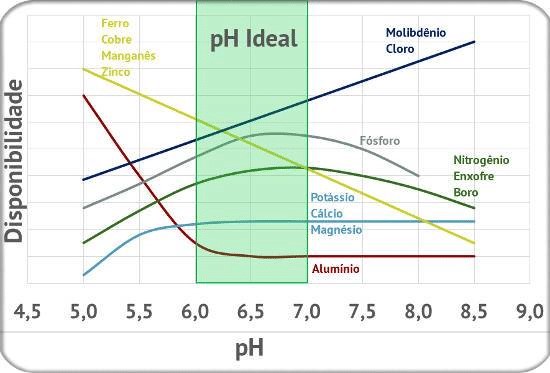Ensuring good productivity in wheat crops begins long before sowing. Proper soil correction not only increases productivity but also protects your crop from climate stresses and diseases.
Wheat (Triticum aestivum L.) plays a fundamental role in global food security, being one of the most cultivated and consumed cereals in the world. In Brazil, wheat production has grown significantly, making it essential to adopt good agricultural practices to ensure high productivity. Among these practices, soil correction before sowing is an essential step to optimize crop development, allowing better absorption of nutrients and greater tolerance to environmental stresses.
Importance of soil correction
Soil correction before wheat sowing aims to improve fertility, balance nutrient levels and correct chemical and physical problems in the soil. Soil acidity, for example, is one of the main limiting factors for wheat crops, as it interferes with the availability of essential nutrients and soil microbial activity (CQFS-RS/SC, 2016).

Importance of soil correction
Proper management of soil pH, usually through liming, improves the availability of nutrients such as phosphorus (P), calcium (Ca) and magnesium (Mg), in addition to reducing aluminum toxicity (Al3+), which can harm plant root development (Raij et al., 1997). The adoption of acidity correctives, such as limestone, should be based on soil analysis, aiming to achieve a pH suitable for the crop, generally between 5.5 and 6.0.
Correction and fertilization practices
In addition to liming, gypsum application may be indicated to correct acidity and improve root development, providing greater access to water and nutrients (Caires et al., 2004). Agricultural gypsum (CaSO4) provides calcium and sulfur, helping to detoxify aluminum in deeper layers of the soil, which favors root growth and improves crop resistance to drought.
The use of fertilizers is another critical factor in ensuring high productivity. Nitrogen (N) fertilization is essential for vegetative development and grain filling, while phosphorus (P) and potassium (K) are essential for rooting and resistance to environmental stresses (Malavolta, 2006). Fertilizer doses should be defined taking into account the availability of nutrients in the soil, the cultivation system, and the crop's requirements.
Incorporating organic matter into the soil is also an efficient strategy for improving soil structure, increasing moisture retention, and promoting beneficial microbial activity. Practices such as crop rotation, the use of cover crops, and direct planting contribute to improving fertility and the sustainability of the production system.
Organic matter
Organic matter is extremely important for wheat cultivation, as it improves soil fertility and helps plants develop. Studies have shown that soils with more organic matter have better productivity. Crop rotation and the use of cover crops help maintain soil quality, making nutrients more accessible to wheat. The use of alternatives, such as organic fertilizers, manure and plant residues, also contributes to soil improvement.
Impact on productivity
The adoption of appropriate soil correction strategies has a direct impact on wheat productivity. Research shows that corrected and well-managed soils can result in increases of over 20% in grain production, compared to uncorrected soils (Caires et al., 2004). In addition, nutritionally balanced soils give plants greater tolerance to climatic stresses, reduce the incidence of diseases and minimize the need for chemical inputs, making production more efficient and economical.
Final considerations
Soil correction before wheat sowing is an essential step to ensure high productivity and production quality. Monitoring soil fertility, combined with appropriate management practices, allows for the optimization of crop development and maximizes economic returns for the producer. In addition to agronomic gains, adequate soil correction contributes to the sustainability of the production system, reducing environmental impacts and promoting more productive and efficient wheat production.
Therefore, soil correction should be seen not only as an input, but as an essential investment to ensure the productivity and sustainability of wheat crops. To assist in this process, 3tentos offers a soil diagnosis service, enabling an accurate analysis of soil needs and technical guidance for efficient and personalized management. For more information, contact a 3tentos consultant.
Text written by Amanda Fornari and Marco Aurélio Fruet Borges, members of AGR Jr. Consultoria Agronômica, Junior Enterprise of the Agronomy Course at UFSM Campus Frederico Westphalen, under the guidance of Professor Gizelli Moiano de Paula.
References
CAIRES, E. F. et al. Soil chemical changes and response of wheat and soybeans to limestone and gypsum applied to the surface in a no-tillage system. Brazilian Journal of Soil Science, v. 28, n. 1, p. 125-136, 2004.
SOIL CHEMISTRY AND FERTILITY COMMITTEE - RS/SC (CQFS-RS/SC). Fertilization and liming manual for the states of Rio Grande do Sul and Santa Catarina. 10th ed. Porto Alegre: SBCS/NRS, 2016.
MALAVOLTA, E. Mineral nutrition and plant fertilization. São Paulo: Ceres, 2006.
RAIJ, B. Van et al. Fertilization and liming recommendations for the State of São Paulo. 2nd ed. Campinas: IAC, 1997.
AGROADVANCE. Soil pH and nutrient availability: is it correct to use this diagram? Available at: https://agroadvance.com.br/blog-ph-do-solo-e-disponibilidade-de-nutrientes/. Accessed on: 04/22/2025
Cover image: reproduction/internet



